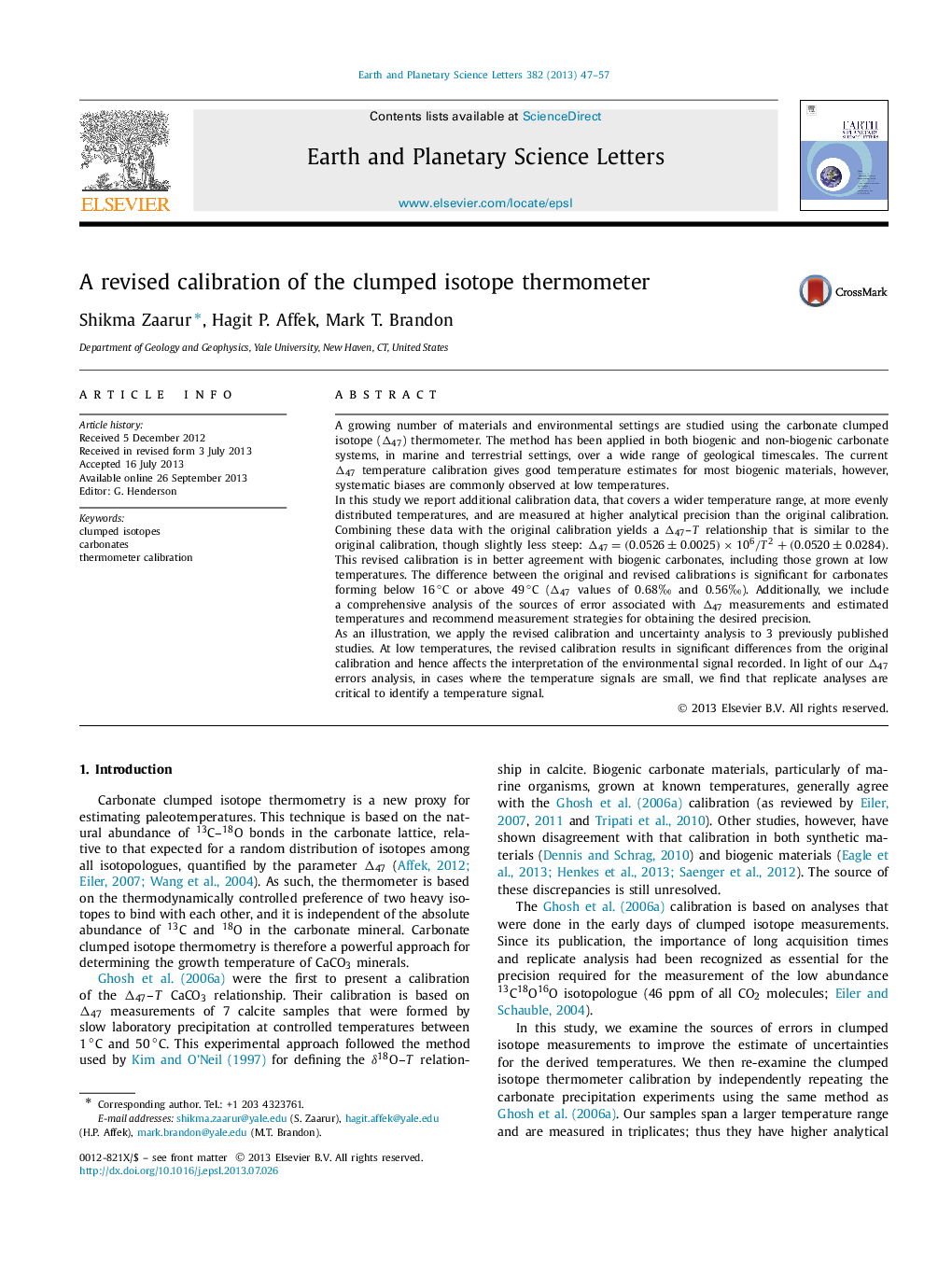| Article ID | Journal | Published Year | Pages | File Type |
|---|---|---|---|---|
| 6429961 | Earth and Planetary Science Letters | 2013 | 11 Pages |
â¢We repeat and expand the original clumped isotopes temperature calibration.â¢We characterize sources of uncertainty in clumped isotopes measurements.â¢The revised clumped isotopes thermometer is less steep than the original.â¢Biogenic carbonates grown at known temperatures agree with this revised calibration.
A growing number of materials and environmental settings are studied using the carbonate clumped isotope (Î47) thermometer. The method has been applied in both biogenic and non-biogenic carbonate systems, in marine and terrestrial settings, over a wide range of geological timescales. The current Î47 temperature calibration gives good temperature estimates for most biogenic materials, however, systematic biases are commonly observed at low temperatures.In this study we report additional calibration data, that covers a wider temperature range, at more evenly distributed temperatures, and are measured at higher analytical precision than the original calibration. Combining these data with the original calibration yields a Î47-T relationship that is similar to the original calibration, though slightly less steep: Î47=(0.0526±0.0025)Ã106/T2+(0.0520±0.0284). This revised calibration is in better agreement with biogenic carbonates, including those grown at low temperatures. The difference between the original and revised calibrations is significant for carbonates forming below 16â°C or above 49â°C (Î47 values of 0.68â° and 0.56â°). Additionally, we include a comprehensive analysis of the sources of error associated with Î47 measurements and estimated temperatures and recommend measurement strategies for obtaining the desired precision.As an illustration, we apply the revised calibration and uncertainty analysis to 3 previously published studies. At low temperatures, the revised calibration results in significant differences from the original calibration and hence affects the interpretation of the environmental signal recorded. In light of our Î47 errors analysis, in cases where the temperature signals are small, we find that replicate analyses are critical to identify a temperature signal.
